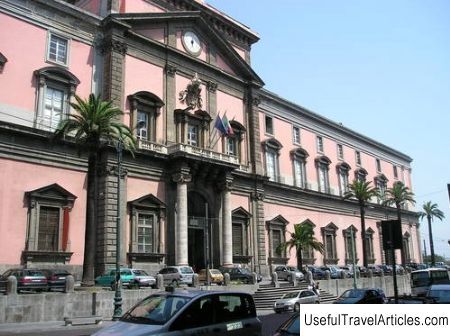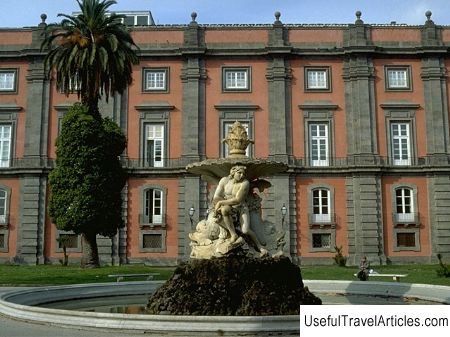National Archaeological Museum in Italy, Naples resort
Rating: 7,5/10 (100 votes)  archaeological finds discovered during excavations in Herculaneum and Pompeii. The building that houses the museum today was erected in 1615. Until 1777, it housed the University of Naples. Soon, King Ferdinand the Fourth ordered the reconstruction of the building and re-planning of its interior space for the Royal Library and the Bourbon Museum. During construction work, a second floor appeared on the left and right wings. In 1816, the collections of the Farnese family were moved to the museum, as well as the finds discovered during excavations of ancient cities in the area of Mount Vesuvius. The collection of the museum continued to grow, mainly due to excavations carried out in Campania. In the middle of the 19th century, the museum became state property. In 1957, the museum also housed an art gallery, which later formed the nucleus of the National Museum and the National Gallery of Capodimonte. After the gallery was moved, only antiquities remained in the museum, in connection with which it was renamed the National Archaeological Museum. Of particular interest is the exposition `` Egyptian Antiquities '', which consists of items of Egyptian art. This collection of objects is the third largest in Italy. The core of the collection is – collections of Giuseppe Pikianti and Stefano Borgia. In the adjoining room there are other Egyptian objects that were donated to the museum in 1842 by Schnars – a German traveler, here you can also see finds in the Egyptian style, found during excavations in Pompeii and other regions of Campania. Also worth visiting is the exhibition `` Mosaic '', in which a unique collection of mosaics is presented to the attention of visitors, discovered in Stabia, Herculaneum and Pompeii. The mosaics date back to the 2nd century BC. until 79 AD The collection of medals and coins occupies six rooms and consists of more than 200 thousand items found in the Campania region. In separate rooms there are collections of antique coins of Rome and Greece. A rather impressive collection of bronze and marble statues, made up of finds discovered during excavations in the vicinity of Mount Vesuvius and the Phlegrean fields. Most of the statues are copies of Greek statues by Cretius, Kalamila, and other masters of the ancient era. The most significant exhibits are the statue of the Farnese Atlantean, Venus Callipygus, the statue of Farnese Hercules, a collection of busts of the emperors of Rome, statues of Aristogion and Harmodius, statues from the Villa of the Papyri, etc. The Secret Cabinet is also worth a visit. containing reliefs, frescoes and other items on erotic themes.    
We also recommend reading Castel del Ovo in Italy, Naples resort Topic: National Archaeological Museum in Italy, Naples resort. |




